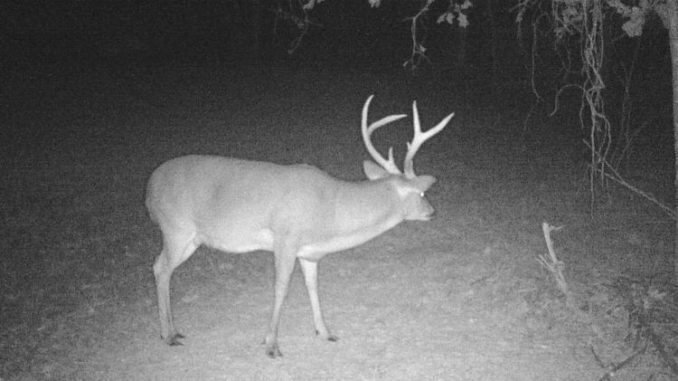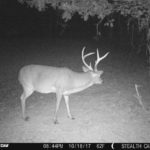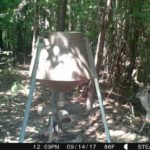
If a “big ol’ mature buck” is your goal, learn how to recognize one
Well, we once again find ourselves at the close of another year and headed straight into the clutches of what passes for winter here in the Deep South.
As the new year begins, if a line drawn on a map of Mississippi represented the current geographical boundary of peak breeding and rutting activity, much like a blue, saw-toothed line represents a cold front on a television weather map, it would depict a diagonal line running roughly from southwest generally to northeast at about mid-state, with the line slowly moving and transitioning toward the southeast. This means that deer hunters across Mississippi, depending on exactly where they hunt, experience a wide variation of rut timing and peak breeding dates.
Moving from north to south, the conditions and challenges relative to seeing and bagging rutting bucks is directly dependent on the calendar and a hunter’s location.
One common theme, though, can be found from one end of the state to the other: if bagging a fully mature buck is on your annual bucket list, a you must have a good understanding of your quarry. You can travel the state and ask different hunters what they’re after, and get what sounds like the exact same answer. “Oh, I’m after a big ol’ mature buck.” As far as a buck’s age, our imaginary hunter could mean anything from an adult 3½-year-old, to a mature 4½-year-old, or even a 5½- to 7½-year-old buck — the latter being truly old.
A lot of it has to do with a given hunter’s level of experience in the woods and overall knowledge of buck behavior, and exactly what visual characteristics are indicative of buck age.
It is not particularly hard to peg a buck’s age — as viewed on-the-hoof — up to 3½ years of age. Beyond 3½, it becomes definitely harder, and age estimates made by hunters on bucks older than 3½, by eyeball or trail-camera photos, tend to be surprisingly inaccurate. Over the years, my experience and observations have been that pre-harvest age estimates of bucks made by a lot of hunters tend to fall a year or two older than what ground-check reality reveals. I think the situation though has been getting progressively better over the past few years as hunters have become more educated and experienced regarding aging deer on-the-hoof.
Let’s look at what visual clues are indicative of buck age from the age of 3½ on. A 3 ½-year-old buck is considered an adult, and as such, its has become heavily muscled, particularly in the neck and shoulders. This is the first time a buck’s front shoulders and neck appear to be swollen, but you can still discern a break where the neck meets the shoulders.
The buck will have a racehorse look with a relatively straight back and stomach line. Having a thin waist, the chest is noticeably deeper than the hindquarters. The buck’s legs will finally appear to fit its body and not appear too long. At this age, a buck’s antlers will begin to have decent mass and will be carrying overall somewhere between 50 to 75 percent of the buck’s genetic potential. A buck’s tarsal glands are still relatively small but will become darkened during the rut.
At 4½, a mature buck will still have some growth potential left. A buck’s heavily muscled neck will blend right into its chest and shoulders. The waistline will be even with the bottom of the belly, and the legs will begin to appear to be a little short for the body. The belly line will be relatively straight, showing no apparent sag. The buck’s antlers will be expressing between 75 and 90 percent of their ultimate genetic potential, and the deer will have large, darkly stained tarsal glands.
If a buck reaches the ripe old age of 5½ to 7½, the body will be heavily muscled, but signs of aging will have appeared. Its stomach will sag, and the back will have a sway-back look. The legs will appear to be noticeably short for the body. At this stage, the antlers are typically expressing 90 to 100 percent of their ultimate genetic potential, and past the age of 5½ the antlers can even begin to regress. The leg tarsals will be large heavily stained, even all the way to the hoof.
Telltale signs:
As a whitetail buck matures, its body undergoes changes that allow hunters to more accurately estimate its age: the size and stain of its tarsal glands, the sag of its heavy belly, the comparative size of its neck and front shoulders. Hunters who truly want to target an older, trophy deer need to know how to recognize those changes.




